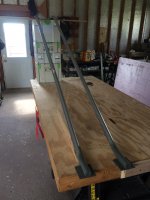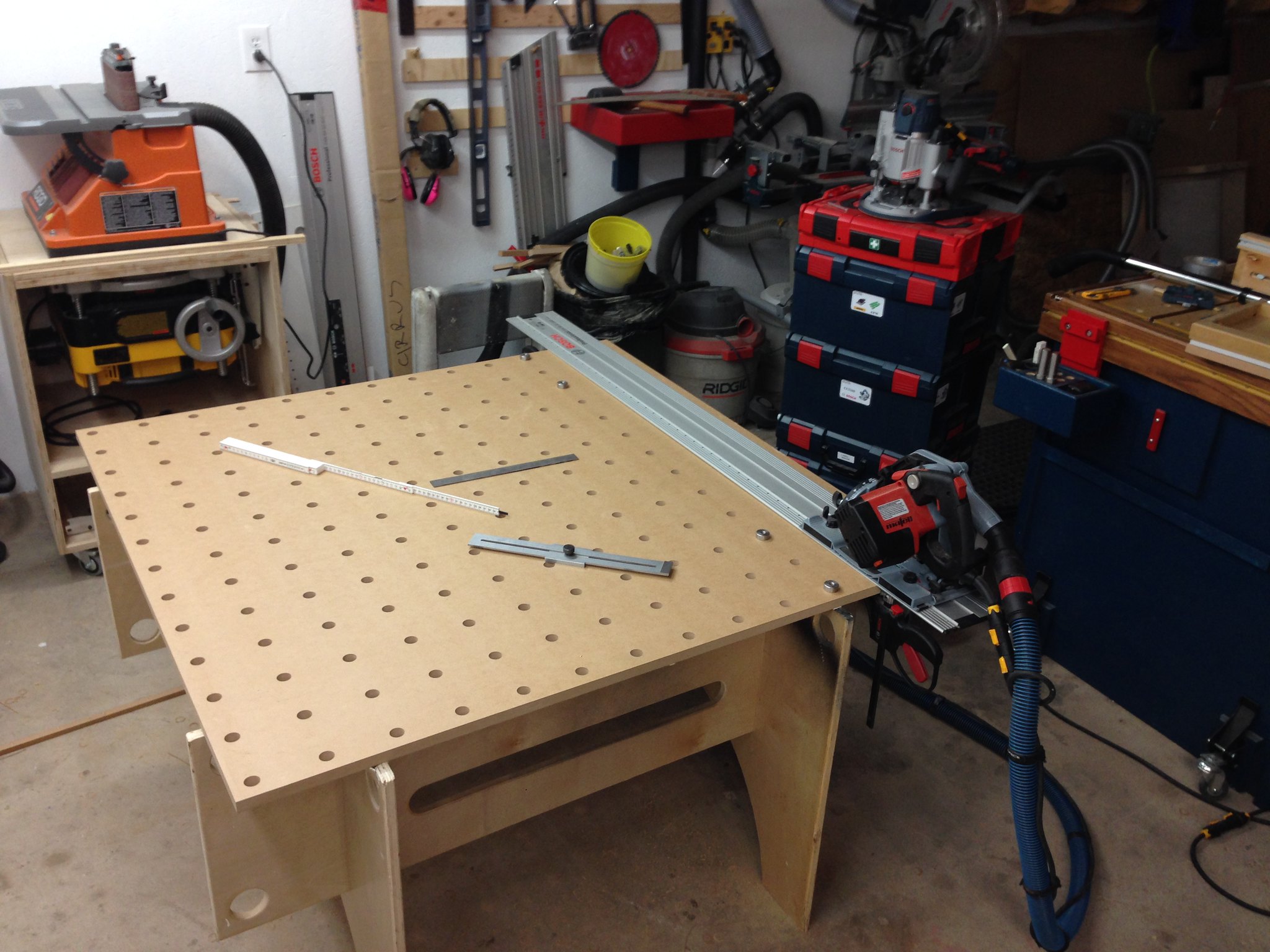- Joined
- Nov 21, 2015
- Messages
- 850
As a new TS55 owner I need to adapt or replace an existing shop based 4x8ft assembly table to do double duty as a track saw cutting table for plywood sheets. The table is in a larger but extremely congested shop.
What is the most practical way to create a semi permanent table surface setup for ripping and crosscutting?
Which FESTOOL (MFT) parts should I buy for this purpose?
Unanswered questions in my mind:
MDF surface with MFT hole pattern and bench dogs? QWAS?
How to protect - or not protect the MDF - so others can use the table for mostly smaller assembly projects
Using 2" EPS styrofoam sheets on the table top as a spoil board creates a handling/storage problem when the EPS sheet is not needed.
How to preserve conventional wood working clamping edge space
Besides the cutting capability on the table surface I plan to build several wood drawer cases to be housed underneath along one long side while parking my Systainers below the table on the opposite side.
I know your feedback will help me get a headstart toward an optimal solution.
I have spent hours reading FOG posts before writing this post. Amazing information resource.
thanks for helping [smile]
Hans
What is the most practical way to create a semi permanent table surface setup for ripping and crosscutting?
Which FESTOOL (MFT) parts should I buy for this purpose?
Unanswered questions in my mind:
MDF surface with MFT hole pattern and bench dogs? QWAS?
How to protect - or not protect the MDF - so others can use the table for mostly smaller assembly projects
Using 2" EPS styrofoam sheets on the table top as a spoil board creates a handling/storage problem when the EPS sheet is not needed.
How to preserve conventional wood working clamping edge space
Besides the cutting capability on the table surface I plan to build several wood drawer cases to be housed underneath along one long side while parking my Systainers below the table on the opposite side.
I know your feedback will help me get a headstart toward an optimal solution.
I have spent hours reading FOG posts before writing this post. Amazing information resource.
thanks for helping [smile]
Hans










